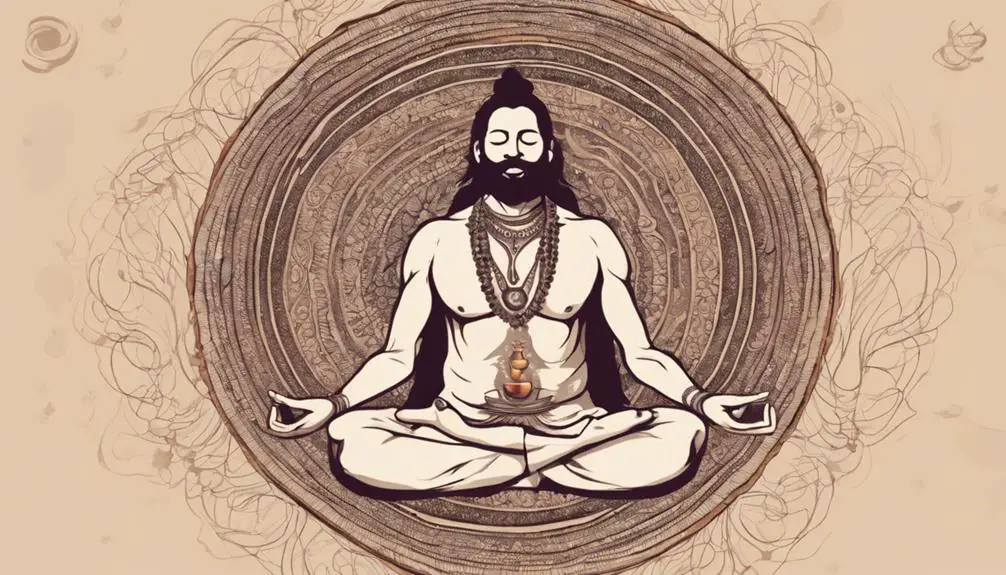Origins of Hypnosis Timeline
Ancient Civilizations' Practices: Hypnosis How-To Guide
August 24, 2017 - Origins of Hypnosis Timeline
Ancient civilizations like Mesopotamia, Egypt, Greece, Rome, India, and China utilized unique hypnosis-like practices for healing and spiritual development. Mesopotamian sleep temples used dream incubation techniques. Egyptian rituals focused on interpreting dreams as divine messages. Greek sanctuaries combined physical and spiritual elements. Romans employed suggestive therapies for mental well-being. Indian yogic trance states emphasized meditation and breathing techniques. Chinese practices also integrated hypnosis methods. Each civilization's approach offers valuable insights into ancient forms of hypnosis that continue to inspire modern practices.
Mesopotamian Sleep Temples
Mesopotamian Sleep Temples were sacred institutions dedicated to the practice of healing through dreams and altered states of consciousness. These temples were known for their ritualistic ceremonies and healing rituals, where individuals sought spiritual practices and dream interpretation to address their physical and emotional ailments. The priests and priestesses who oversaw these temples were believed to have a special connection to the divine realm, guiding individuals through the process of dream incubation and interpretation.
Within the walls of these temples, individuals participated in elaborate ceremonies aimed at invoking the healing powers of the dream world. Through techniques such as meditation, chanting, and the use of sacred herbs, participants induced altered states of consciousness that were believed to facilitate communication with the spiritual realm.
Dream interpretation played a significant role in these practices, as dreams were seen as messages from the gods that held clues to the individual's health and well-being. Overall, Mesopotamian Sleep Temples served as centers of spiritual healing, where the power of dreams was harnessed to address the physical and emotional needs of the people.
Egyptian Dream Incubation
Practiced in ancient Egypt, dream incubation was a methodical and revered process aimed at harnessing the power of dreams for healing and spiritual guidance. This practice involved engaging in symbolic rituals before sleep to invoke specific dreams that would provide insight into one's life and concerns. Egyptians believed that dreams were a gateway to the divine realm, offering opportunities for dream interpretation and receiving divine guidance.
Participants in dream incubation rituals would often visit temples dedicated to dream incubation, where priests facilitated the process through ceremonies and prayers. These rituals were designed to prepare the individual for a deep and meaningful dream experience, guiding them towards spiritual enlightenment and self-discovery.
Dreams obtained through incubation were seen as messages from the gods, providing direction and wisdom for the dreamer's waking life. The intricate connection between dream interpretation, symbolic rituals, and divine guidance made Egyptian dream incubation a significant practice in ancient Egyptian culture, emphasizing the importance of dreams as a tool for personal growth and spiritual development.
Greek Healing Sanctuaries

Greek healing sanctuaries played a significant role in ancient Greece by offering a holistic approach to healing and well-being. These sanctuaries were considered sacred spaces where individuals sought healing through various practices and rituals.
Healing rituals in Greek sanctuaries often involved a combination of physical, mental, and spiritual elements to promote overall wellness. Patients would participate in activities such as bathing, meditation, prayer, and offerings to the gods to invoke healing energies.
One famous example of a Greek healing sanctuary is the Asclepeion at Epidaurus, dedicated to the god of healing, Asclepius. Patients would visit this sanctuary seeking relief from ailments through methods like dream interpretation, herbal remedies, and therapeutic touch. The belief in the divine power of these sanctuaries to bring about healing attracted people from far and wide.
Greek healing sanctuaries served as centers for not only physical healing but also spiritual and emotional well-being, emphasizing the interconnectedness of mind, body, and spirit in the pursuit of health.
Roman Suggestive Therapies
The healing practices of ancient Rome encompassed a variety of suggestive therapies that aimed to induce positive changes in individuals' mental and physical well-being. Roman hypnotic rituals and therapeutic techniques were integral parts of their medical approach. Suggestive therapies in ancient Rome included practices such as hypnotic suggestion, guided imagery, and verbal cues to influence the subconscious mind positively.
Roman hypnotic rituals often involved the use of soothing words, repetitive phrases, and calming gestures to induce a trance-like state in patients. Once in this altered state of consciousness, individuals were believed to be more receptive to therapeutic suggestions and interventions. These suggestive therapies aimed to address a wide range of health issues, from physical ailments to psychological distress.
Through these ancient practices, Roman healers sought to harness the power of the mind to promote healing and well-being.
The utilization of suggestive therapies in ancient Rome highlights the early recognition of the mind-body connection and the importance of psychological factors in maintaining health.
Indian Yogic Trance States

Indian Yogic trance states have long been integral to the spiritual practices and self-realization techniques of ancient Indian civilizations. These states are induced through specialized meditation techniques that facilitate altered consciousness.
Central to this practice is the emphasis on Yogic breathing, known as pranayama, which plays a crucial role in achieving a trance-like state. Through controlled breathing patterns, individuals can alter their physiological and mental states, leading to a heightened awareness and deepened meditative experience.
Yogic trance states involve a profound sense of focus and concentration, allowing individuals to explore their inner selves and connect with higher spiritual dimensions. The practice of trance induction in Indian Yogic traditions often involves guided visualization, chanting of mantras, and intense concentration on specific focal points, such as the breath or a sacred symbol.
These techniques aim to quiet the mind, transcend ordinary consciousness, and access deeper levels of awareness and insight. Overall, Indian Yogic trance states serve as a powerful tool for self-discovery, spiritual growth, and inner transformation.
Chinese Hypnotic Practices
Chinese hypnotic practices have a rich history rooted in ancient traditions and cultural beliefs. Traditional techniques such as 'Nuan Gong' involve inducing a trance-like state through rhythmic drumming and chanting, allowing individuals to access deeper levels of consciousness. These practices were often used in healing rituals, spiritual ceremonies, and martial arts training.
In modern times, Chinese hypnotic practices have found new applications in various fields. Therapists incorporate techniques like visualization, guided imagery, and progressive relaxation to help individuals overcome phobias, manage stress, and improve overall well-being. The integration of traditional Chinese medicine principles, such as balancing qi energy, adds a unique dimension to hypnotherapy sessions.
Furthermore, Chinese hypnotic practices have been adapted for performance enhancement in sports psychology, helping athletes enhance focus, build confidence, and visualize success. By combining ancient wisdom with contemporary psychological approaches, Chinese hypnotic practices continue to evolve and offer valuable tools for personal growth and holistic healing.
Frequently Asked Questions
Can Hypnosis Be Used for Past Life Regression?
Hypnosis has been explored for past life regression, claiming to facilitate reincarnation exploration. However, skepticism surrounds its historical accuracy, as scientific evidence is inconclusive. Further research is needed to validate such claims in a rigorous manner.
Are There Risks Involved in Hypnosis?
When considering hypnosis, it is essential to address potential risks such as ethical concerns, potential side effects, and dangers. Precautions should be taken to ensure the process is conducted safely and ethically.
How Long Does It Take to See Results From Hypnosis?
The effectiveness of hypnosis varies, with results often manifesting in a few sessions. It's crucial to manage expectations and track progress. While some notice changes quickly, others may require more time for significant outcomes.
Can Hypnosis Help With Anxiety or Depression?
Hypnosis for stress relief and mental health has shown promise in alleviating symptoms of anxiety and depression. Through guided relaxation techniques, individuals may experience reduced stress, improved coping mechanisms, and enhanced overall well-being.
Is Self-Hypnosis Safe to Practice at Home?
Self-hypnosis techniques can be safe to practice at home when done correctly. It's important to research reputable sources, understand the process, and ensure a comfortable, distraction-free environment. Start with simple practices and gradually advance.
Conclusion
In conclusion, ancient civilizations from Mesopotamia to China have utilized various forms of hypnotic practices for healing, spiritual guidance, and suggestion therapy.
These practices, rooted in cultural traditions and spiritual beliefs, demonstrate the early understanding of altered states of consciousness and the power of suggestion in influencing behavior and well-being.
The diverse methods and techniques used by these civilizations highlight the universal human interest in harnessing the mind's potential for healing and self-improvement.
